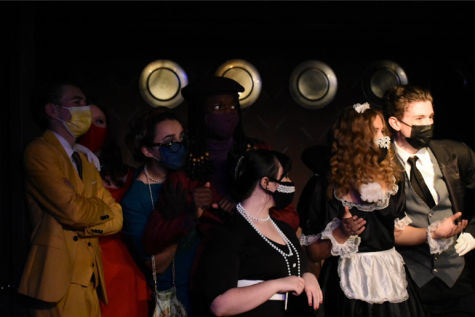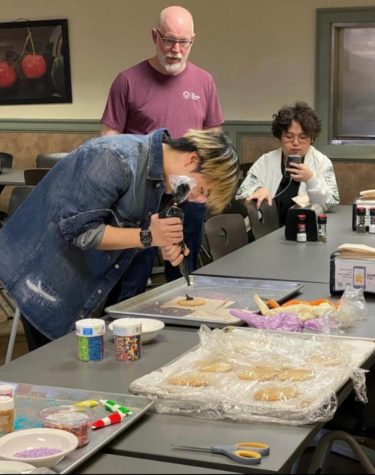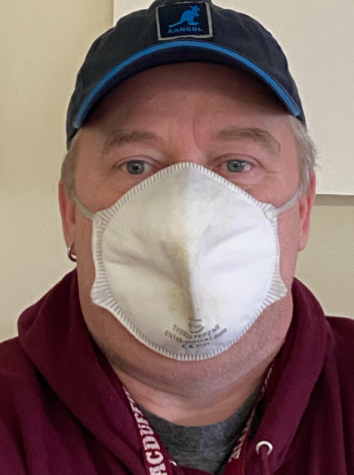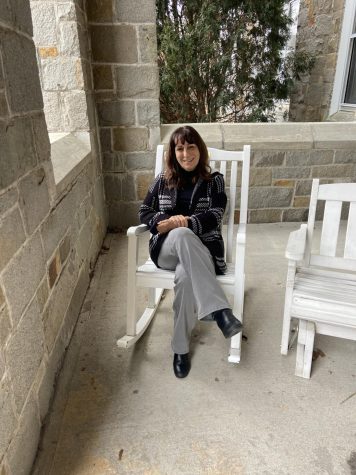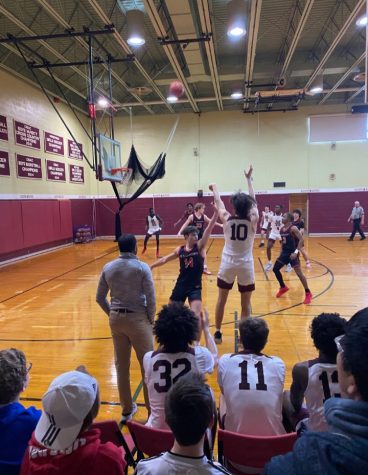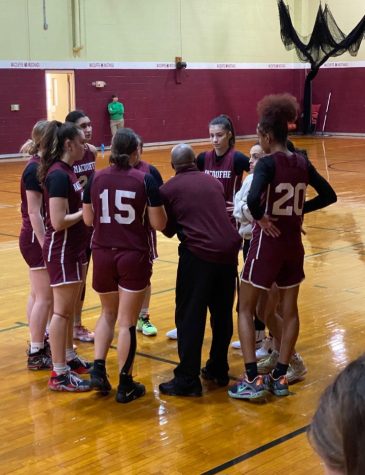Vaping Concerns at MacDuffie
“It’s more dangerous than we thought.”
“It’s a national issue, especially in our youth.”
“There’s all sorts of ways it affects brain development, we just don’t know.”
These words from members of MacDuffie’s faculty, medical staff, and administration are not referencing traditionally illicit behaviors like uneraged drinking or recreational drug use, but a new phenomenon that has become a craze among today’s youth: vaping. Although a recent string of teen deaths linked to vaping has led researchers to conclude that it is actually more harmful than smoking cigarettes, vaping has maintained its presence throughout the MacDuffie community, according to students and faculty.
Vaping involves inhaling vapor from a handheld device similar in appearance to a flash drive, and was first marketed fewer than ten years ago as a safer alternative to smoking cigarettes. According to Dean of Students Trish Cox, vaping did not appear on the radars of most high schools until just two or three years ago, when scientists began discovering that vaping can adversely affect one’s health more so than cigarettes. Cox recounted her experience with vaping in public and private school administrations, and she explained that schools began to take action once vaping became prevalent among students.
“Within the last three years, it’s really become a concern because more and more kids are doing it,” Cox said. School nurse Erica Piwcio and Athletics trainer and health teacher Kevin Konstant similarly noted that their views on vaping shifted after it garnered significant media attention as a more dangerous alternative to smoking, contrary to what both had previously believed.
“It’s affecting…actual tissue in the lungs and the functioning of the lung itself a lot quicker than cigarettes would do,” Piwcio said. “Elements in the vaping material in itself are going right into the bronchioles and deep down into the sacs and destroying them.”
Piwcio explained that this unexpected discovery has caused her to take a “different approach on counselling kids,” as she feels she can no longer advise students to vape in order to quit smoking. When comparing the health risks of vaping and smoking, Piwcio said that “Either one is going to harm you, either way.”
Echoing Piwcio’s sentiments, Konstant said in regards to vaping, “It’s changed how I have to look at it as an educator more so than anything.” Konstant also altered his stance regarding the merits of vaping in response to the recent findings, and described his mindset as switching from, “Oh, this is a safer alternative to cigarettes,” to “Oh, this is probably worse for you than cigarettes.”
Even more concerning though is that, in the words of Piwcio, “We don’t know enough about vaping,” as researchers have not yet determined the long-term health effects of vaping given its newness. While history teacher Joan O’Brien admitted that she wasn’t very familiar with vaping from a clinical standpoint, she still had concerns regarding society’s lack of knowledge on the subject.
“Especially with young people, there’s all sorts of ways it affects brain development; we just don’t know,” O’Brien said. O’Brien found this especially concerning in light of the recent vaping-related deaths, as she remarked that “people are dying, and they don’t even know why they’re getting these diseases.”
As the health teacher at MacDuffie, Konstant teaches both middle school and upper school students about the dangers of vaping because he sees students being exposed to vape culture through their peers and social media at an early age. Konstant’s goal is to introduce the concept of vaping to his students “in an education setting rather than in a life setting,” as he feels that social media often glamorizes the activity.
“It’s able to [be] videotape[d], and you’re able to blow these vape clouds and do tricks with them and stuff like that; so now it’s not only something that’s addicting, it’s something that’s fun,” Konstant said in regards to vaping, noting that teens tend to overlook the negative health effects of vaping in favor of its entertaining aspects.
Nonetheless, Konstant stressed that his health curriculum isn’t designed to make students feel ashamed should they choose to vape but rather to tell students, “This is what could happen if you choose to do this, but it’s ultimately your choice.” While Konstant does as much as possible within the confines of his health class to caution students against vaping, he is hoping that the state legislature’s response to vaping-related deaths will further steer students away.
Konstant voiced support for the Commonwealth’s decision to ban the sale of flavored nicotine products, which is set to go into effect on June 1, 2020. Given that the appetizing flavors of many vaping products have contributed to vaping’s popularity, Konstant believes that students will say to themselves, “If it tastes terrible and I know it’s probably bad for me, then I don’t want it,” once these flavors are no longer available for purchase.
Although this legislation is likely to curb vaping among teens, according to Konstant, MacDuffie already prohibits students from vaping on campus and possessing vaping devices.
However, Cox believes that vaping is “more prevalent than the disciplinary records would say because it’s an easy thing to hide.” She explained that boarding students—especially those living in single rooms—can vape in their dorm rooms quite easily without others knowing, and vaping products designed to look like household objects make it even more difficult to enforce the anti-vaping policy.
“It’s so hard to catch because the devices are so small and they look like other things…they even have ones that look like pens and pencils,” Cox said. “You could look through somebody’s room and never even find the device…And that’s what’s so scary about it.”
Nevertheless, Cox clarified that MacDuffie’s administration would “never advocate for” removing the doors of bathrooms or implementing restroom attendants, referencing the drastic measures that many other schools have taken to combat in-school vaping.
Cox explained that MacDuffie is “a community of trust,” in which the administration “trust[s] that kids are doing the right thing.” She thinks students should have the opportunity to learn from their mistakes and “move forward” if they break the rules, and added that students will “get the help they need” if they are struggling with a vaping addiction.
If a student is struggling with vaping and wants to quit, Cox recommends that they seek assistance from Piwcio or school counselor Deanne Klingensmith in confidence. Cox emphasized that students who have not been caught vaping will not be punished for approaching the school nurse or guidance counselor.
“If they go and say ‘I have a problem, I need help with this,’ they’re not going to get in trouble,” Cox said.

